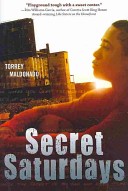
Twelve-year-old boys living in a rough part of New York confront questions about what it means to be a friend, a father, and a man.
Material appropriate for young adults

Twelve-year-old boys living in a rough part of New York confront questions about what it means to be a friend, a father, and a man.
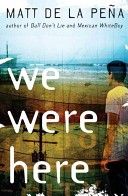
After “it” happens, Miguel is sent to juvenile hall for a year. The judge had no idea he was doing Miguel a favor. Ever since “it” happened, his mother can’t even look at him. “Any” home besides his would be a better place to live.
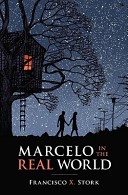
Marcelo Sandoval, a seventeen-year-old boy on the high-functioning end of the autistic spectrum, faces new challenges, including romance and injustice, when he goes to work for his father in the mailroom of a corporate law firm.
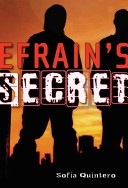
Ambitious high school senior Efrain Rodriguez dreams of escaping the South Bronx for an Ivy League college like Harvard or Yale. But how is his family going to afford to pay for a prestigious university when Moms has to work insane hours to put food on the table as it is? And Efrain wouldn’t dare ask that good-for-nothing father of his who has traded his family in for younger models. Left with few options, Efrain chooses to do something he never thought he would. He embarks on a double life—honor student by day, drug peddler at night—convinced that by temporarily capitulating to society’s negative expectations of a boy like him, he can eventually defy them. Sofia Quintero makes a stunning debut writing for young adults with this gritty, complex, and real exploration of the life of an urban teen whose attempt to leave one world behind for a better one could cost him everything. From the Hardcover edition.

Monique is as beautiful and unobtainable as an Aztec goddess. Or is she? In this novel set in California’s San Joaquin Valley, a Mexican American teenager must choose between what he desperately wants and what he knows is best.
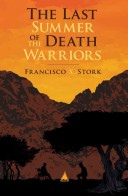
When Pancho arrives at St. Anthony’s Home, he knows his time there will be short: If his plans succeed, he’ll soon be arrested for the murder of his sister’s killer. But then he’s assigned to help D.Q., whose brain cancer has slowed neither his spirit nor his mouth. D.Q. tells Pancho all about his “Death Warrior’s Manifesto,” which will help him to live out his last days fully–ideally, he says, with the love of the beautiful Marisol. As Pancho tracks down his sister’s murderer, he finds himself falling under the influence of D.Q. and Marisol, who is everything D.Q. said she would be; and he is inexorably drawn to a decision: to honor his sister and her death, or embrace the way of the Death Warrior and choose life. Nuanced in its characters and surprising in its plot developments–both soulful and funny–Pancho & D.Q. is a “buddy novel” of the highest kind: the story of a friendship that helps two young men become all they can be.
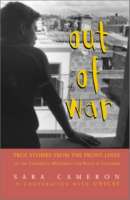
Through nine intimate first-person narratives, Out of War tells the story of the Children’s Movement for Peace, a network of organizations struggling against the forty-year civil war in Colombia. Readers will meet young people like Juan Elias, who decided he could best avenge his father’s murder by fighting to end the war; Maritza, who found refuge in the peace movement after her family and friends abandoned her in the communas of Medellin; and Beto, who works for the peace he never had in his abusive home. The voices of these children are raw and real, and their stories are nothing short of inspirational. In 1996, the Children’s Movement for Peace helped organize the Children’s Mandate, a referendum on children’s rights in Colombia. Two million children turned out to vote for their right to peace, sending the Colombian government a powerful message about its inability to control the violence within its borders. Since then, the Movement has worked to help children cope with loss, displacement, poverty, and other effects of the war. It has also taught children how to resolve conflict without fighting. The movement’s work is impressive, yet Out of War is really about the individual children who lead the group. Through them, readers will learn not only about the tenuous life of children in Colombia, but about what it means to give back to your community and face adversity with true courage and hope.
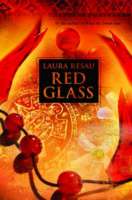
Sixteen-year-old Sophie has been frail and delicate since her premature birth, but discovers her true strength during a journey through Mexico, where the six-year-old orphan her family hopes to adopt was born, and to Guatemala, where her would-be boyfriend hopes to find his mother and plans to remain.
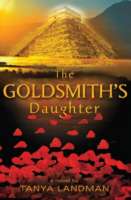
A bearer of doom, or a bringer of change? As the Aztec empire falls, one girl defies her destiny.In the golden city of Tenochtitlán, the people live in awe of Emperor Montezuma and in fear of blood-hungry gods. Under an ill-fated sky, a girl is born, facing a life of submission and domestic drudgery. But Itacate has a secret passion for goldwork, forbidden to women, and is forced to disguise her identity to protect herself and her family. When her city is shaken by Cortez’s invasion, Itacate challenges fate, culture, and faith by crafting golden statues — and pursuing the love of a man who should be her enemy. From the author of I AM APACHE comes a tale of clashing cultures, a rich and powerful depiction of Aztec life during the Spanish conquest of Mexico.
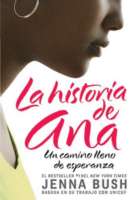
La historia de Ana comienza el día en que nació afectada con el VIH, virus que le transmitió su joven madre, quien muere pocos años después. Desde entonces, la infancia de Ana es una maraña de secretos—secretos sobre su enfermedad, su familia y los abusos que ha sufrido—. Arrastrada de una casa a otra, difícilmente encuentra seguridad o aceptación. Mas cuando se enamora y se embaraza a los diecisiete años, inicia una jornada que la conducirá a un nuevo comienzo, nuevas penas y una nueva esperanza.
Basada en su trabajo con UNICEF e inspirada en la vida de una chica que conoció personalmente, Jenna Bush narra la historia de muchos niños del mundo que viven marginados y excluidos de lo más elemental: cuidado, apoyo y educación. Al final del libro encontrarás una serie de recursos que te indican cómo puedes ayudar a cambiar la situación de niños como Ana y cómo puedes protegerte a ti y a los demás.